When discussing cabinets, you could be talking about freestanding cabinets such as Larders (Pantry Cabinets), Display Cabinets, Storage Cabinets; or you may be talking about fixed cabinets such as kitchen cabinets or wall mounted cabinets. In either case, these antique or vintage pieces of furniture can complement any home or work space, or serve as an inspiration for new design ideas and concepts.
In this article we will be covering the five main types of cabinets that are available on the market today, and what differences there are between these cabinets. Whether you are looking for original antiques or vintage pieces, or you are happy to use a reproduction, we hope this article can help you to narrow down your search by type.
Contents
The Different Types of Cabinets
There are many cabinet designs, so to put it simply, cabinets are pieces of furniture that are either freestanding or fixed to the floor or wall. What makes a cabinet different from a chest, table, or shelving unit, is that they have draws and/or doors.
These draws and doors are usually situated on the front side of the cabinet, and are used to store items. With that said, there are some designs that have the draws and/or door on the side of the unit, or in the case of some display cabinets, on the back.
As there is no one standard design for all cabinets to follow, each style of cabinet design is intended to serve a particular purpose. Some are designed to be more practical and to house specific types of materials or items. Others are designed to be used in a specific way, regardless of what is being stored.
Here are the different types of cabinets summarized for your convenience.
1) Wall Mounted and Bench Top Cabinets
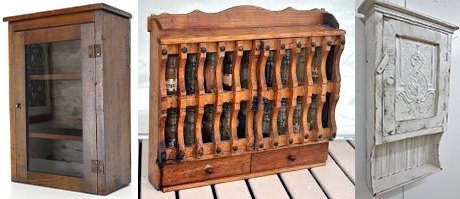
This style of cabinet has a smaller design, only taking a few inches of surface space, and uses either draws that are broken up into rows and columns or that are almost as wide as the front of the cabinet, or they use a large door/doors that covers the majority of the cabinet’s front side.

They are meant to either sit atop a workbench or be attached to a wall. Their smaller, more compact design, is meant to store small miscellaneous items that need to be stored and/or sorted, yet remain easily accessible when needed. This could include tools, small parts and components, or even herbs and medicines in place of medicine cabinets.
2) Hallway and Entrance Cabinets
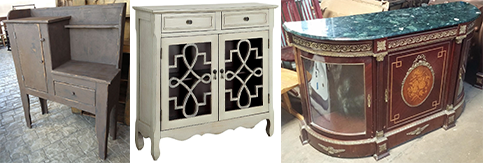
While these shorter cabinet designs are typically seen placed against the wall in hallways, or near the entrance of a building, their practical design can result in them being used in dinning halls, kitchens, workshops, and even bathrooms and rec rooms.

The general design of these cabinets, includes a flat top that can easily serve as a display table or bench. Typically people will not eat at these cabinets like they would a dinning table or kitchen counter, but they can be used to display snack foods such as fruits and candies that are displayed in bowls. Generally people use the top of these cabinets to display vases and other ornamental items, or as a place to store their keys, mail and purse or wallets as they enter or leave their homes.
There are even less decorative and more sturdy designs out there that have been made to be used as workbenches, or to have other goods stacked on top of them for storage.
3) Food Storage
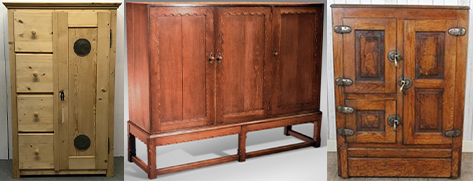
Otherwise known as Larders and Pantry Cabinets, these cabinets are designed with the express purpose of storing food off of the ground. The idea behind this style of cabinet, was originally to help keep food stock away from vermin, and to also provide a practical means for sorting and storing food.
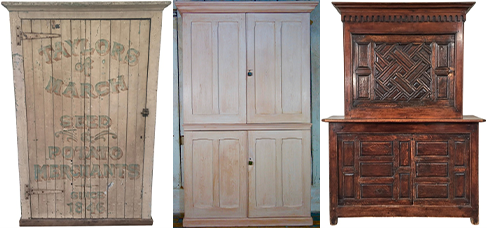
This style of cabinet tends to use a large door or two, with either no external draws, or draws only running down one side of the front of the unit. On the inside, there are multiple shelves, and there may even be boxes, baskets or draws on the inside as well. More modern cabinets use internal latches to hold the door(s) closed, while older designs relied on latches and locks to seal them shut.
4) Display Cabinets
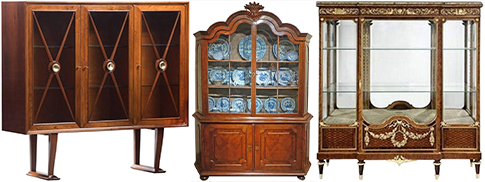
Display cabinets are designed with the sole purpose of displaying the items within. These cabinets may use either glass or slats that have been spaced apart to provide a clear view of their items.
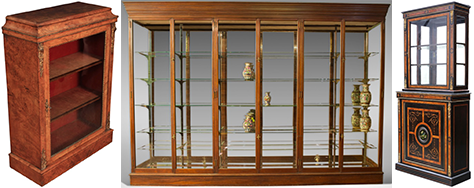
Sometime these viewing portals are built into the front side of the cabinet with the access door(s) on the sides or the back of the cabinet. Other times the access door is on the front, with the viewing portable being either part of the door or the entire door itself.
5) Storage Cabinets
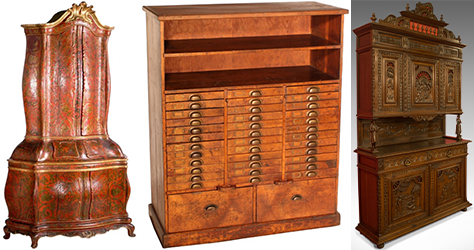
Storage Cabinets fall somewhere between Display Cabinets and Larders. These Cabinets tend to be found in the main living area of a residence, or office. They can also be found in bedrooms or workshops.
What a storage cabinet is used for, will largely depend on how the internal space is configured. They could be used to store papers and books, linen and bedding, or plats and bric-a-brac.
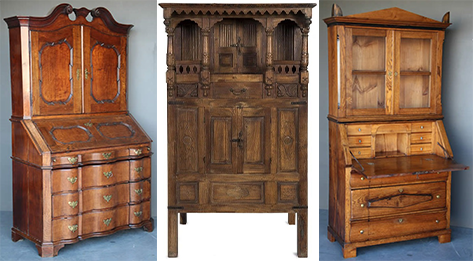
Storage cabinets can have some of the most varied designs of all cabinets. They can be made to be free standing, or built into the floor and against the wall. They could even have a partition design with a lower storage compartment and an upper storage compartment, that is a separated table top or shelf.
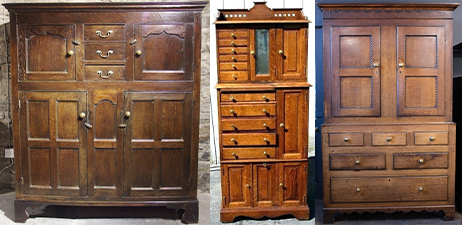
Some of the more well know versions of a storage cabinet that you may be familiar with, can be seen in many homes today. These are the chest of draws, tall boys, night stands, and wardrobes, that are in many bedrooms, or the TV stand that many of our TVs are sitting on.
How to Find and Identify Antique and Vintage Cabinets
First things first, be wary of any pieces that are labeled “Antique White”. This is generally not in reference to the piece being an actual antique, it usually refers to the color of paint that was used on the furniture. There were some cabinets that were painted white, but this paint was not made the same way as many paints today.
Here is a brief example of what was used to make white paints in the past. These examples could help you to determine the age of a piece by the materials used to make the paint:
- In and around the 1600’s, lime stone, ground oyster shells, milk, egg whites and rice were used to create white wash.
- During the 1700’s, toxic white-lead power was ground by hand.
- In the 1800’s, white pigment was made with nontoxic zinc oxide.
Today’s market is also flood with reproductions. Some companies openly state that their products are reproductions, or will use the word “style” in the names of their furniture. Other companies are not so forth coming, and there are even some less then reputable sellers out there that may try to pass these newer pieces off as originals.
To help avoid wasting your money on these costly mistakes, familiarize yourself with tools and techniques that were used by craftsmen in the past. A good indicator of a piece’s age, is the quality of the craftsmanship that was used to assemble the piece. Prior to the industrial revolution of 1860’s, furniture was made by hand. There are a few tell tale signs of when something was made by hand, or if machines were used, such as marks, dents and how flush pieces butt up against each other.
If you have an idea of the age of the piece, look for the techniques that would have been used to make it in that particular era, such as if the nails were hammered round or milled, do the nails have squared or flat heads, were screws or tacks used, how was the timber cut, what type of finish was used to seal the timber, and what is the type of timber that was used.
Additionally there is also the style of the piece. At different time periods and in different regions, just like today, different styles were in fad. If you know the apparent time period the piece is alleged to have been made, do some research into what was the popular style at the time for that particular region.
Here are a few of our other articles that cover things from the techniques that were used by carpenters, to popular styles, and things to look for when trying to determine the age of a particular piece of antique furniture.
- Antique Joints and Joinery Techniques.
- Antique Furniture Styles, the Last 200 Years.
- How to Identify the Wood Used to Make Antique Furniture.
- How to Tell If Your Rocking Chair is An Antique.
Cabinet Decor for Around the Home
There are many breath taking pieces that have been made by artist throughout the centuries. Famous artists and studios have produced some of the most highly sort after pieces in the world, artist like Gustav Stickley (1858-1942) an American craftsmen would was known for his subtle and simplicity beautiful furniture. André-Charles Boulle, a 17th century French artist who was so highly skilled at inlaying different materials of stone, metal, woods, pewter, and animal shells and horns, into his works, that they became known as Boulle Works. Or the hard-stone workshop in Florence, the Galleria dei Lavori, that produced beautiful pieces that had after woodcut illustrations of the works from 15th century Italian artist Francesco Del Tuppo adorning their surfaces.
Not only can these breath taking pieces serve as feature pieces for a room, they can also help to inspire many creative interior designers. Thanks to the wide variety of styles that cabinets can be found in, they can serve as the inspiration for how the room is designed and laid out. Their style, design and color, can be used to determine the color of the room, and the style of furniture that could be used in the room.
Final Thoughts
Thanks to the craftsmen and artist of yore, we now have access to such a large variety of different types of cabinets; that there’s bound to be a style that speaks to you. Just remember to be mindful of reproductions, and look for signs that the piece was made using the appropriate techniques and materials for the time period.
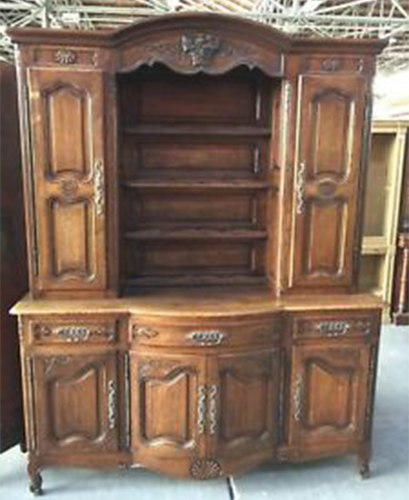
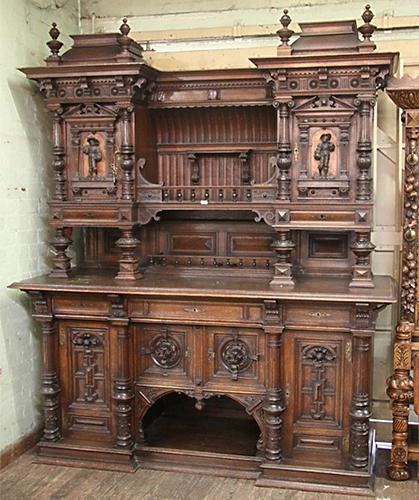
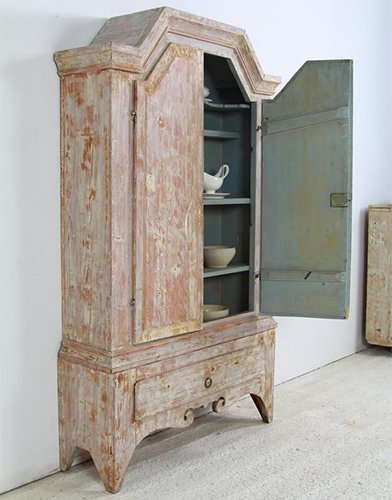
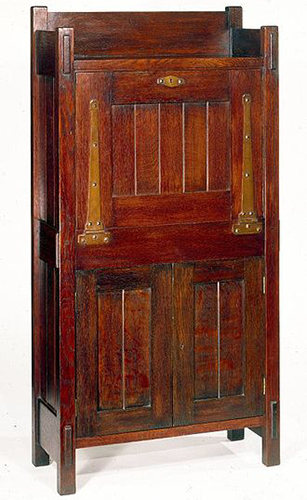
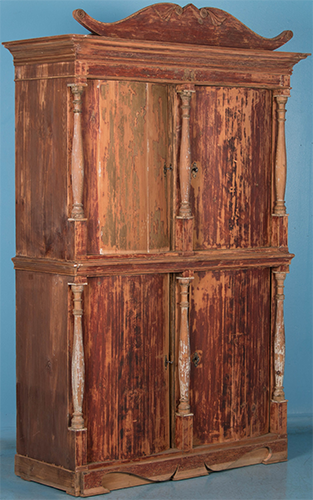
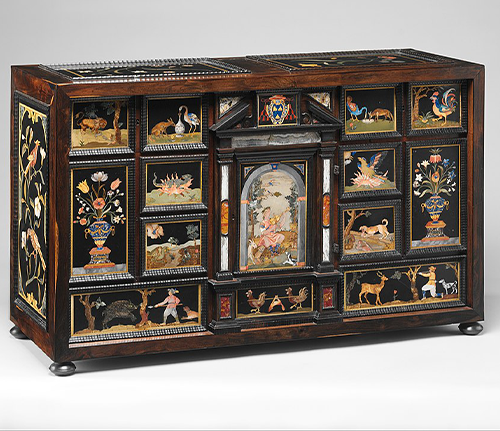
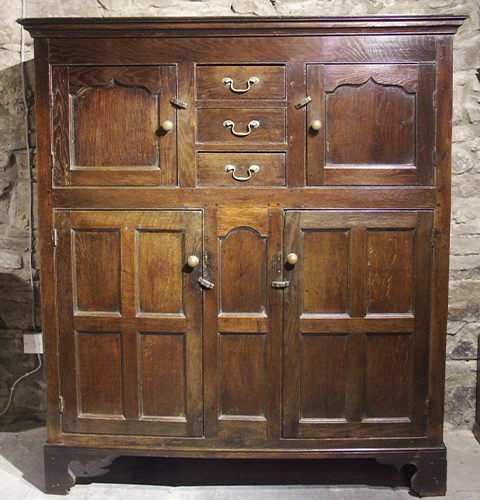
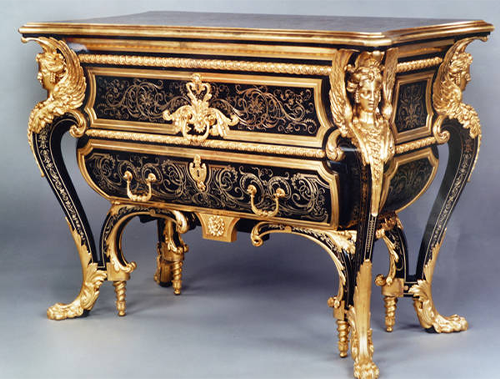

It is interesting white-lead was ground by hand for pigment. My wife’s mother passed a couple of months ago and we inherited a lovely cabinet. We may consider reaching out to a professional collector or someone who sells antique french cabinets to see what they think.